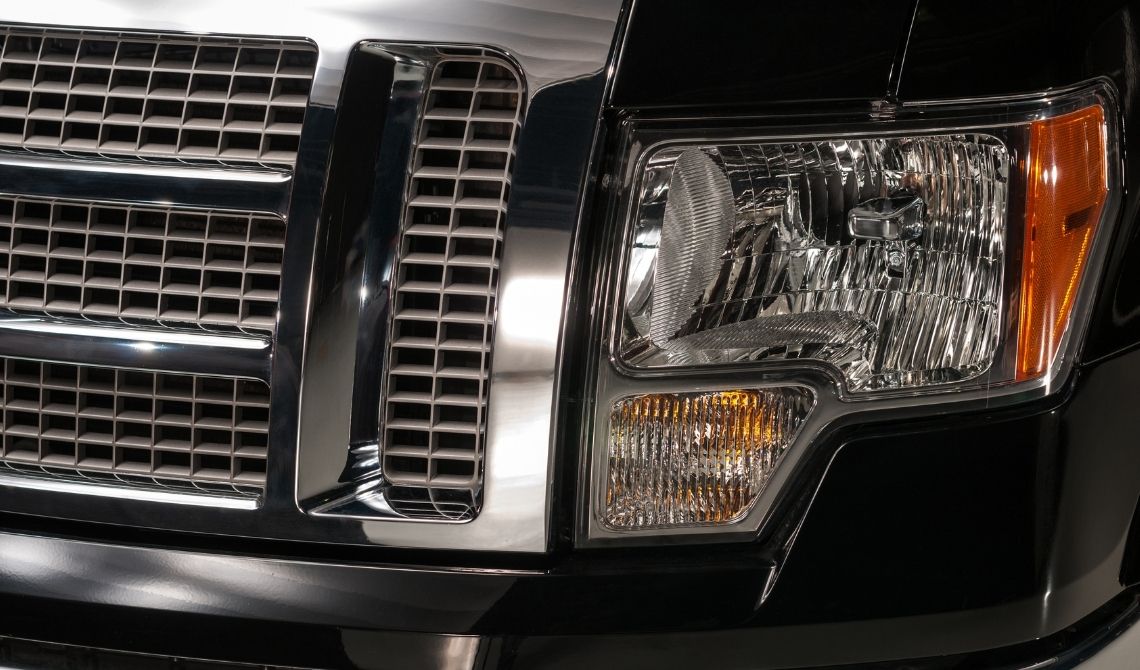Illuminate the Road A Comprehensive Guide to Truck Headlights
Introduction to Truck Headlights
Truck headlights serve as the guiding light in the vast expanse of the road, illuminating the path ahead and ensuring safe navigation, especially during the night or adverse weather conditions. Beyond merely lighting the way, these crucial components play a pivotal role in safeguarding both drivers and pedestrians by enhancing visibility and reducing the risk of collisions.
In this chapter, we delve into the significance of truck headlights in promoting road safety. We explore how these luminous beacons contribute to clear visibility, allowing drivers to anticipate obstacles, navigate turns, and maintain a safe distance from other vehicles. Additionally, we examine the role of headlights in signaling intentions and facilitating communication between drivers, further enhancing road safety protocols.
Moreover, we shed light on the evolution of truck headlights, tracing their journey from conventional halogen bulbs to advanced LED and HID technologies. This progression not only signifies improvements in brightness and efficiency but also underscores the ongoing efforts to enhance safety standards in the automotive industry.
Ultimately, this chapter sets the stage for a comprehensive exploration of truck headlights, laying the foundation for understanding their importance, functionality, and impact on road safety. As we embark on this enlightening journey, we invite readers to gain insights into the intricate world of truck lighting and discover the key considerations for selecting, maintaining, and optimizing these essential components.
Types of Truck Headlights
Truck headlights are not one-size-fits-all; they come in various types, each offering distinct features and benefits. Understanding these differences is crucial for truck owners looking to enhance visibility and safety on the road. In this chapter, we explore the primary types of truck headlights available in the market today.
Halogen Headlights
Traditional yet reliable, halogen headlights have been a staple in automotive lighting for decades. They provide adequate brightness and are relatively affordable compared to other options. However, they tend to have a shorter lifespan and consume more energy than newer technologies.
LED Headlights: Light-Emitting Diode (LED) headlights have gained popularity for their superior brightness, energy efficiency, and longevity. LED technology offers crisp illumination and can last significantly longer than halogen bulbs. Although they may have a higher upfront cost, the long-term savings and performance benefits make them a compelling choice for many truck owners.
HID (High-Intensity Discharge) Headlights: HID headlights produce intense, bright light by passing an electrical current through xenon gas. They offer excellent visibility and can illuminate a broader area compared to halogen or LED headlights. While HID headlights are known for their brightness, they can be more complex to install and may require additional components for proper operation.
By understanding the characteristics and advantages of each type of truck headlight, truck owners can make informed decisions based on their preferences, driving needs, and budget considerations. In the following chapters, we will delve deeper into the factors to consider when choosing and installing truck headlights, empowering readers to select the optimal lighting solution for their vehicles.
Factors to Consider When Choosing Truck Headlights
Selecting the right headlights for your truck is a crucial decision that can impact visibility, safety, and overall driving experience. With a myriad of options available in the market, it’s essential to consider several factors to ensure you make an informed choice. In this chapter, we explore the key considerations when choosing truck headlights.
Brightness and Visibility
Optimal brightness is essential for clear visibility, especially during nighttime driving or inclement weather conditions. Consider headlights with a high lumen output to ensure sufficient illumination of the road ahead without causing glare to oncoming drivers.
Energy Efficiency: LED headlights are renowned for their energy efficiency, consuming less power than traditional halogen bulbs. Choosing energy-efficient headlights not only reduces the strain on your truck’s electrical system but also extends battery life and reduces fuel consumption.
Durability and Longevity: Look for headlights that are built to withstand harsh environmental conditions and frequent use. LED headlights, in particular, are known for their durability and long lifespan, making them a cost-effective investment in the long run.
Compatibility and Ease of Installation: Ensure that the headlights you choose are compatible with your truck’s make and model. Additionally, consider the ease of installation, especially if you plan to install the headlights yourself. Some headlights may require modifications or additional wiring, while others offer plug-and-play installation for added convenience.
Regulatory Compliance: Verify that the headlights meet regulatory standards and legal requirements in your area. Compliance with regulations regarding brightness, color, and alignment ensures not only your safety but also avoids potential fines or penalties.
By carefully evaluating these factors, you can narrow down your options and choose headlights that best suit your truck’s needs and your driving preferences. In the next chapter, we’ll provide guidance on the installation process to help you seamlessly integrate your new headlights onto your truck.
Installation Guide for Truck Headlights
Installing new headlights on your truck is a rewarding project that can enhance both the aesthetics and functionality of your vehicle. However, proper installation is crucial to ensure optimal performance and safety on the road. In this chapter, we provide a step-by-step guide to help you navigate the installation process with confidence.
Gather Necessary Tools and Supplies
Before beginning the installation, gather all the tools and supplies you’ll need, including a screwdriver or wrench set, electrical tape, wire strippers, and replacement bulbs if necessary. Having everything on hand will streamline the installation process.
Prepare Your Truck: Start by parking your truck on a level surface and turning off the engine. Use the hood release lever to access the headlight assembly from the engine compartment. If necessary, consult your truck’s owner’s manual for specific instructions on accessing the headlights.
Remove the Old Headlights: Carefully remove the retaining screws or clips securing the headlight assembly in place. Disconnect the wiring harness and remove the old headlights from the assembly. Take note of any additional components, such as bulbs or mounting brackets, that may need to be transferred to the new headlights.
Install the New Headlights: Insert the new headlights into the assembly, ensuring they are securely seated. Reconnect the wiring harness and fasten the retaining screws or clips to secure the assembly in place. Double-check the alignment of the headlights to ensure they are positioned correctly.
Test the Headlights: Before finalizing the installation, test the headlights to verify that they are functioning properly. Turn on your truck’s ignition and activate the headlights to check for proper brightness and alignment. Make any necessary adjustments as needed.
Secure and Reassemble: Once you’re satisfied with the installation, secure any loose wiring and reassemble any components that were removed during the process. Close the hood and test the headlights again to ensure everything is in working order.
By following these steps, you can successfully install new headlights on your truck and enjoy improved visibility and safety on the road. In the next chapter, we’ll discuss essential maintenance tips to keep your headlights performing at their best for years to come.
Maintenance Tips for Truck Headlights
Proper maintenance is essential to ensure that your truck headlights remain in optimal condition, providing reliable visibility and safety on the road. In this chapter, we’ll explore essential maintenance tips to help you preserve the performance and longevity of your truck headlights.
Regular Cleaning
Regularly clean your headlights to remove dirt, debris, and road grime that can accumulate on the lens. Use a mild detergent and a soft cloth or sponge to gently scrub the surface of the headlights. Avoid abrasive cleaners or materials that could scratch or damage the lens.
Check for Condensation: Periodically inspect your headlights for signs of condensation buildup inside the lens. Condensation can affect the brightness and clarity of your headlights and may indicate a leak or seal failure. If you notice condensation, address the issue promptly to prevent further damage.
Replace Bulbs as Needed: Monitor the brightness and functionality of your headlights regularly. Dim or flickering headlights may indicate a failing bulb that needs to be replaced. Follow the manufacturer’s recommendations for bulb replacement and choose high-quality, compatible bulbs for optimal performance.
Adjust Headlight Alignment: Proper headlight alignment is crucial for optimal visibility and safety on the road. If you notice that your headlights are misaligned or pointing in the wrong direction, adjust them accordingly. Refer to your truck’s owner’s manual or seek professional assistance if you’re unsure how to adjust the alignment.
Protect Against UV Damage: Exposure to UV radiation from the sun can cause yellowing or discoloration of the headlights’ lens over time. To protect against UV damage, consider applying a protective coating or sealant specifically designed for automotive headlights. This can help maintain the clarity and appearance of your headlights for longer.
Inspect Wiring and Connections: Periodically inspect the wiring and connections associated with your headlights for any signs of damage, corrosion, or loose connections. Faulty wiring or connections can affect the performance of your headlights and may require repairs or replacement.
By incorporating these maintenance tips into your routine, you can ensure that your truck headlights remain in top condition, providing reliable visibility and safety on the road for miles to come. In the next chapter, we’ll explore common problems associated with truck headlights and provide troubleshooting tips to address them effectively.
Troubleshooting Common Headlight Problems
Despite their importance, truck headlights can encounter various issues that compromise their functionality and effectiveness. In this chapter, we’ll explore some common problems that truck owners may encounter with their headlights and provide troubleshooting tips to address them effectively.
Dim Headlights
Dim headlights can be caused by a variety of factors, including a failing bulb, dirty lens, or electrical issues. Start by cleaning the lens and checking the bulb for signs of damage or wear. If cleaning and bulb replacement don’t resolve the issue, inspect the wiring and connections for any signs of damage or corrosion.
Flickering Lights: Flickering headlights are often indicative of a poor electrical connection or a failing bulb. Check the wiring and connections to ensure they are secure and free of corrosion. If the problem persists, try replacing the bulb with a new one to see if that resolves the issue.
Uneven Beam Pattern: An uneven beam pattern can affect visibility and safety on the road, especially during nighttime driving. Check the alignment of your headlights and adjust them as needed to ensure they are pointing straight ahead and providing an even beam pattern. Refer to your truck’s owner’s manual for instructions on how to adjust the headlight alignment properly.
Condensation Buildup: Condensation inside the headlight lens can impair visibility and indicate a leak or seal failure. If you notice condensation, carefully remove the headlight assembly and inspect the seals for any signs of damage or wear. Replace any damaged seals and ensure the assembly is properly resealed to prevent further condensation buildup.
Overheating: Overheating headlights can be caused by various factors, including excessive voltage, poor ventilation, or a failing ballast (in HID headlights). Check the voltage output of your truck’s electrical system and ensure it is within the recommended range for your headlights. Additionally, ensure that the headlights are properly ventilated and free of any obstructions that could impede airflow.
By identifying and addressing these common headlight problems promptly, you can ensure that your truck headlights remain in optimal condition, providing reliable visibility and safety on the road. In the next chapter, we’ll explore options for upgrading your truck headlights to enhance performance and functionality.
Upgrading Truck Headlights for Enhanced Performance
Upgrading your truck headlights can significantly improve visibility, safety, and overall driving experience. In this chapter, we’ll explore various options for upgrading your truck headlights to enhance performance and functionality.
LED Conversion Kits
LED conversion kits are a popular choice for truck owners looking to upgrade their headlights. These kits replace traditional halogen bulbs with energy-efficient LED bulbs, providing brighter and clearer illumination. LED headlights offer superior longevity and durability, making them a cost-effective investment in the long run.
Upgraded Housings: Upgrading to aftermarket housings can improve the performance and aesthetics of your truck headlights. High-quality housings with advanced optics and reflectors can enhance light output and distribution, resulting in better visibility and safety on the road.
Halo Rings or Projector Lenses: Halo rings or projector lenses are stylish additions that can enhance the appearance and functionality of your truck headlights. Halo rings provide a distinctive halo effect around the headlights, adding a touch of elegance to your truck’s front end. Projector lenses, on the other hand, improve light output and distribution, resulting in a more focused and uniform beam pattern.
Adaptive Headlight Systems: Adaptive headlight systems utilize advanced technology to adjust the direction and intensity of the headlights based on driving conditions. These systems can automatically pivot the headlights in the direction of the steering wheel or adjust the beam pattern to avoid blinding oncoming drivers. While more expensive than traditional headlights, adaptive headlight systems offer unparalleled safety and convenience benefits.
Auxiliary Lighting: In addition to upgrading your primary headlights, consider adding auxiliary lighting such as fog lights, driving lights, or light bars to further enhance visibility in low-light or adverse weather conditions. Auxiliary lighting can supplement your primary headlights and provide additional illumination where needed.
By exploring these options for upgrading your truck headlights, you can customize your vehicle to meet your specific needs and preferences while enhancing safety and visibility on the road. In the next chapter, we’ll explore the regulatory standards and legal requirements that govern truck headlights, ensuring compliance and safety for all road users.
Regulations and Legal Requirements for Truck Headlights
Ensuring compliance with regulatory standards and legal requirements is essential when it comes to truck headlights. In this chapter, we’ll explore the regulations governing truck headlights and the legal requirements that truck owners must adhere to for safe and lawful operation on the road.
Brightness and Intensity
Regulatory standards specify the acceptable brightness and intensity levels for truck headlights to prevent glare and ensure visibility without causing discomfort to other drivers. Headlights that exceed these limits may be subject to fines or citations for non-compliance.
Color Temperature: Truck headlights must emit light within a specified color temperature range to ensure consistent visibility and minimize color distortion. Most regulations require headlights to emit white or yellow light, with restrictions on colors that could impair visibility or cause confusion on the road.
Beam Pattern and Alignment: Truck headlights must be properly aligned and emit a specific beam pattern to provide adequate illumination of the road ahead without blinding oncoming drivers. Regulations dictate the acceptable range of beam patterns and alignment tolerances to ensure safe and effective lighting.
Height and Mounting: Regulatory standards also specify the acceptable height and mounting location for truck headlights to ensure optimal visibility and prevent obstruction of other drivers’ views. Headlights that are mounted too high or too low may be deemed non-compliant and subject to enforcement action.
Retrofitting and Modification: Truck owners must exercise caution when retrofitting or modifying their headlights to ensure compliance with regulatory standards. Non-compliant modifications, such as installing aftermarket HID conversion kits or tinting the lens, can result in fines or penalties and may compromise safety on the road.
By familiarizing themselves with the regulations and legal requirements governing truck headlights, truck owners can ensure compliance and safety while operating their vehicles. Regular maintenance and inspection of headlights are essential to ensure they meet regulatory standards and provide reliable visibility on the road. With proper adherence to these requirements, truck owners can enjoy peace of mind knowing their headlights are operating safely and lawfully.
For detailed information, you can contact us at torqueusa.com.


